PSIA-AASI is an association that is made up of eight regions which represent different regions across the country. PSIA-AASI and its eight regions serve more than 32,000 members and 320 member snowsport schools. There are then more than 20 different types of member groups that work together to govern our association.
- Governance Groups & Structure (See details about the 20+ member groups.)
- Organization Chart (See how the Governance Groups work with the CEO.)
- What is Policy Governance? (Learn how this tool helps the above groups & CEO get things done.)
- PSIA-AASI Ends (Learn about PSIA-AASI’s organization goals.)
PSIA-AASI’s Board of Directors, Operational Leadership, and Educational Leadership teams work together to serve its members and member schools. These groups meet and govern to ensure a unified and consistent approach to fulfilling the vision of the organization. That vision is “Creating Lifelong Adventures Through Education.”
Members from all eight regions serve on these three groups. This image shows you how all these groups are connected (see the outer blue circle).
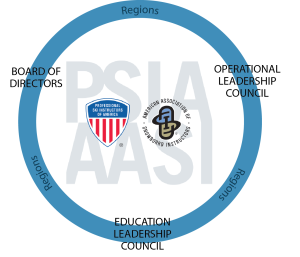
Then, each of those three main groups consist of sub-groups (see the red and blue smaller circles).
- The “Board of Directors” includes subgroups of Board of Directors from all eight regions and a Board of Directors for the entire association. The Boards and the Presidents’ Council includes 99 members which ensures each region and member has a say in all decision being made.
- The Education Leadership Council includes subgroups from different disciplines.
- The Operational Leadership Council includes advisory groups and committees that work on specific issues and topics.
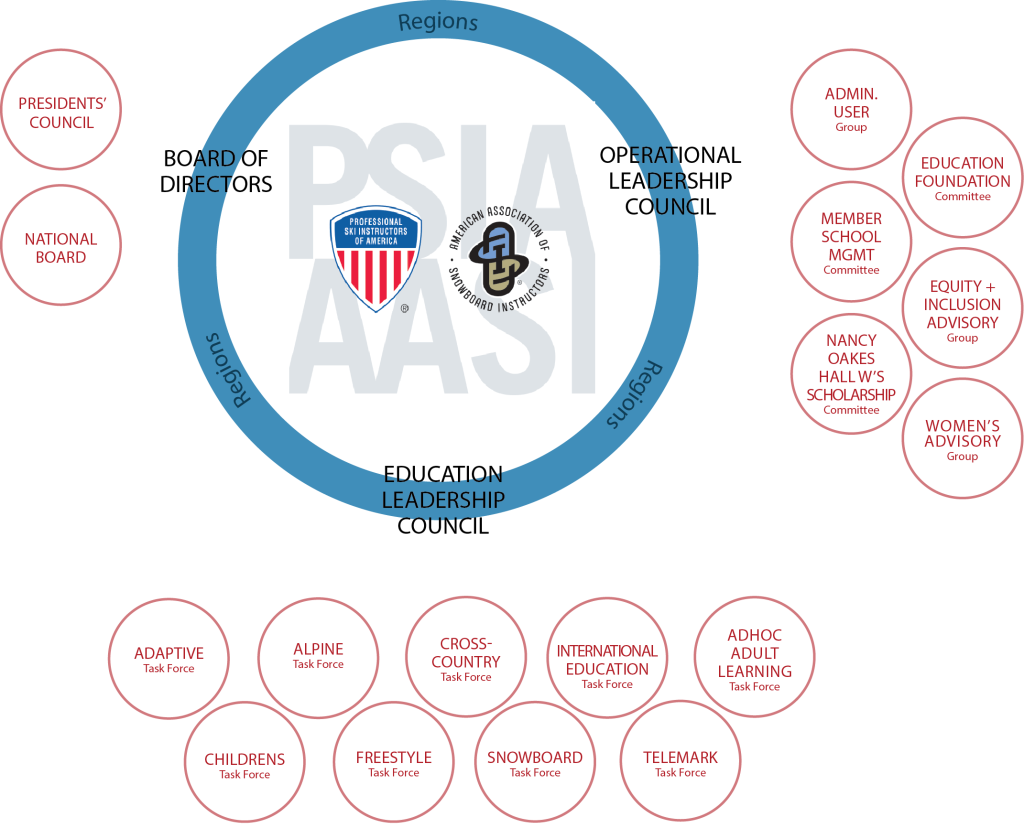
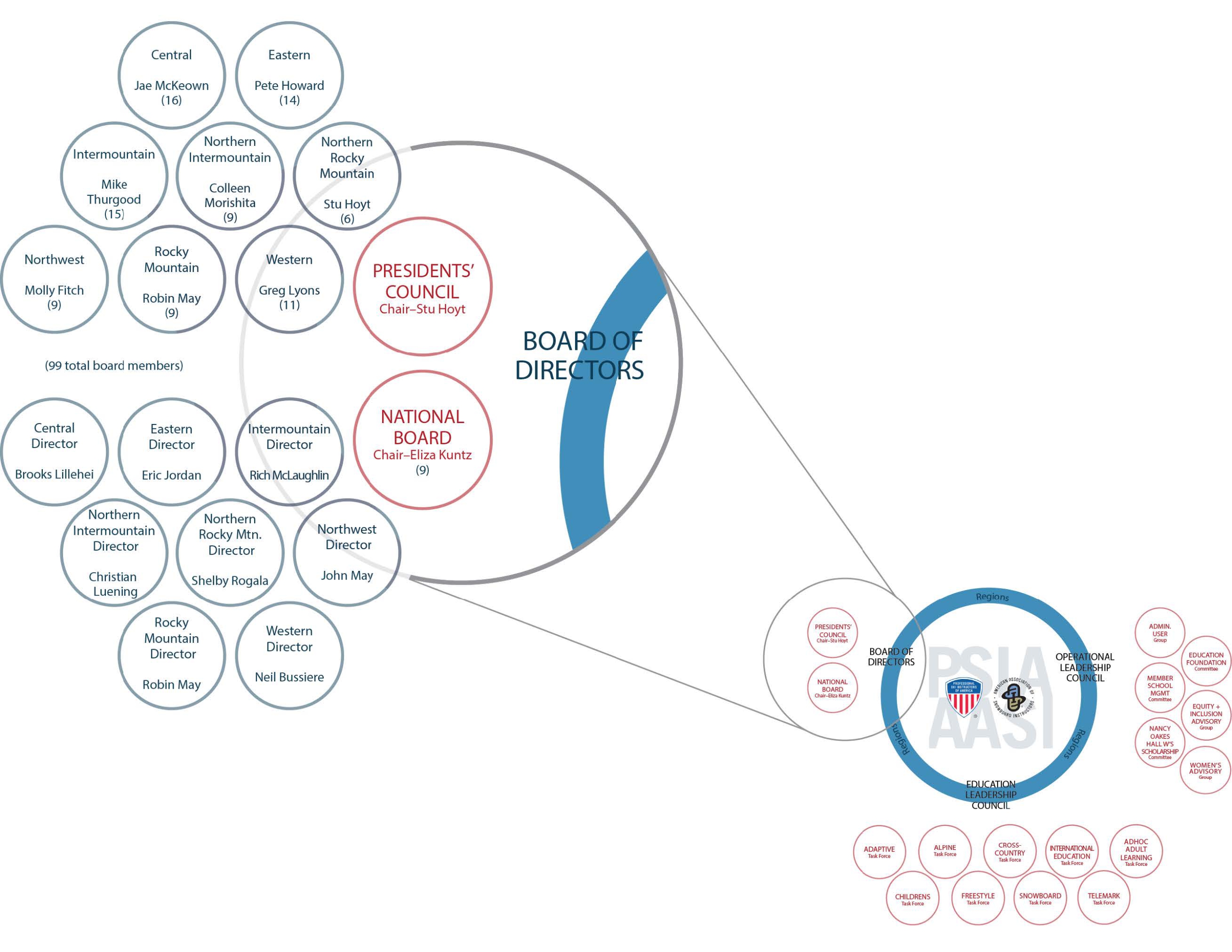
Each region offers professional development and continuing education events, certification training clinics for instructors and schools, leadership opportunities on a local level, networking with peers, instructor training workshops, scholarships and awards, and more!
This Organization Chart will help you understand the connection between the Governance Groups and PSIA-AASI’s CEO.
- The Board of Directors and Board Chair oversee specific Governance Committees and oversee PSIA-AASI’s Chief Executive Officer (CEO).
- The CEO’s job is to carry out the vision of the Board of Directors and the Governance Groups by implementing the day-to-day operations of PSIA-AASI such as finances, member services, marketing, and education initiatives.
- The Operational Committees help support the overall operations efforts too.
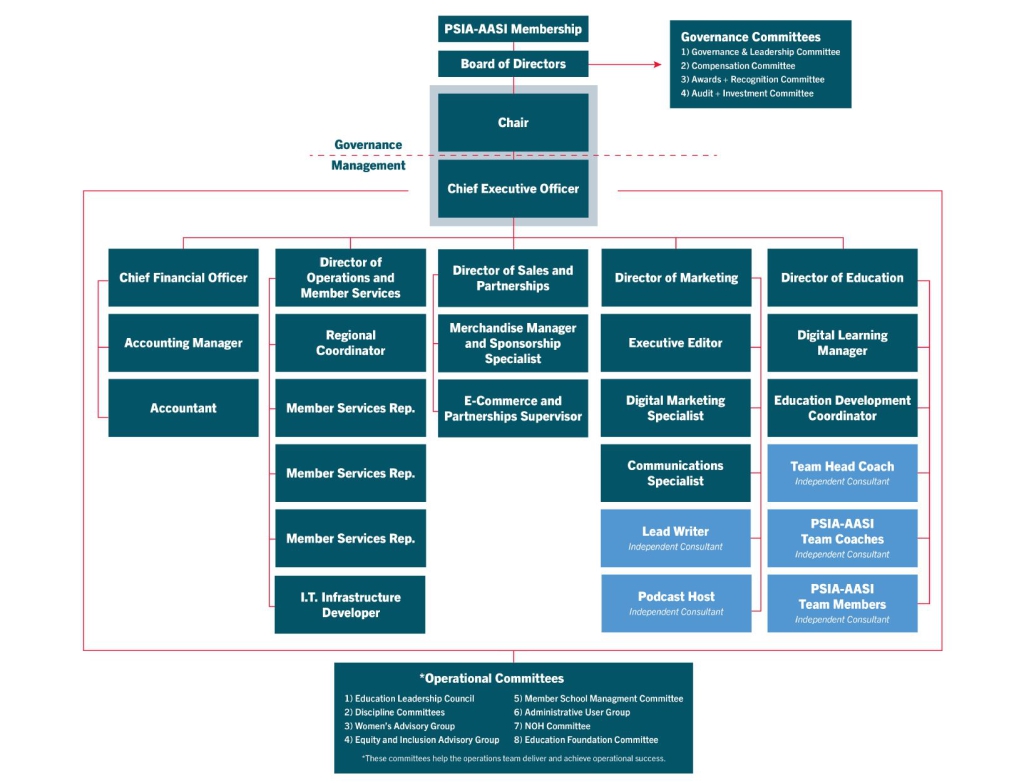
PSIA-AASI’s Board of Directors uses a Policy Governance® model. This model clearly defines and guides the relationship between PSIA-AASI’s owners (members), its Board of Directors, and its CEO.
The model helps the Board make strategic decisions in the best interest of all 32,000 +members. This model clearly identifies outcomes, or “Ends,” that the Board wants to have happen on behalf of all members. This model also helps the Board:
- Increase accountability to meet those Ends
- Improve delegation to the PSIA-AASI CEO to figure out how to achieve these Ends (e.g. outcomes or strategic goals).
Then, it’s PSIA-AASI’s CEO job to oversees staff to implement the Ends. The Board of the Directors and PSIA-AASI’s CEO use PSIA-AASI’s Policy Governance Manual that explains this approach
- Read the PSIA-AASI Policy Governance Manual.
PSIA-AASI’s Policy Governance Structure and its Policy Governance Manual are like an operating system for PSIA-AASI’s Board of Directors. Similar to operating systems for computers, the system isn’t the board’s work, rather the system gives the Board a framework on which they can build agreements and activities.
The structure includes Governance Process Policies, Ends Policies, Board-Management Delegation Policies, and Executive Limitations Policies to achieve organizational goals. By helping the Board and operational staff understand their roles and responsibilities, this structure empowers everyone at PSIA-AASI to deliver on the organization’s shared vision and Ends (aka strategic plan), as understand how to work with each other and create accountability.
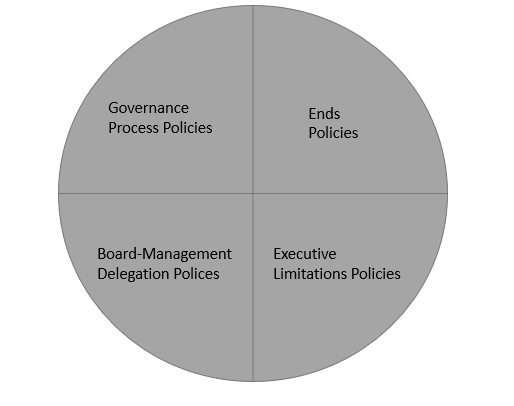
- Governance Process: These describe how the Board functions and its responsibility, as representative of the membership, not to “manage” the PSIA-AASI’s day-to-day operations, but to govern them (e.g. ensure they are well managed).
- Ends: These describe the desired organizational outcomes that PSIA-AASI wants to produce for and on behalf of its members.
- Board-Management Delegation: These describe the way Board delegates authority to the organization (through the CEO and the staff that report to the CEO), and how the Board monitors and evaluates PSIA-AASI’s operational performance.
- Executive Limitations: These describe where the Board authority ends and the CEO’s picks up, by creating scopes of authority in which the CEO must operate.
For additional information on Policy Governance and the structure of this model check out, “The Ten Principles of Policy Governance” article.
Bylaws are the internal rules adopted by PSIA-AASI and its Board. Read PSIA-AASI bylaws. The PSIA-AASI Policies Manual guides PSIA-AASI’s policies.
PSIA-AASI advisory groups, committees, and task forces help the operations team deliver and achieve success to improve the member experience. Learn more.
Indirect costs are the administrative costs of managing and running the association that are not directly related to educational programing. Lean more.

